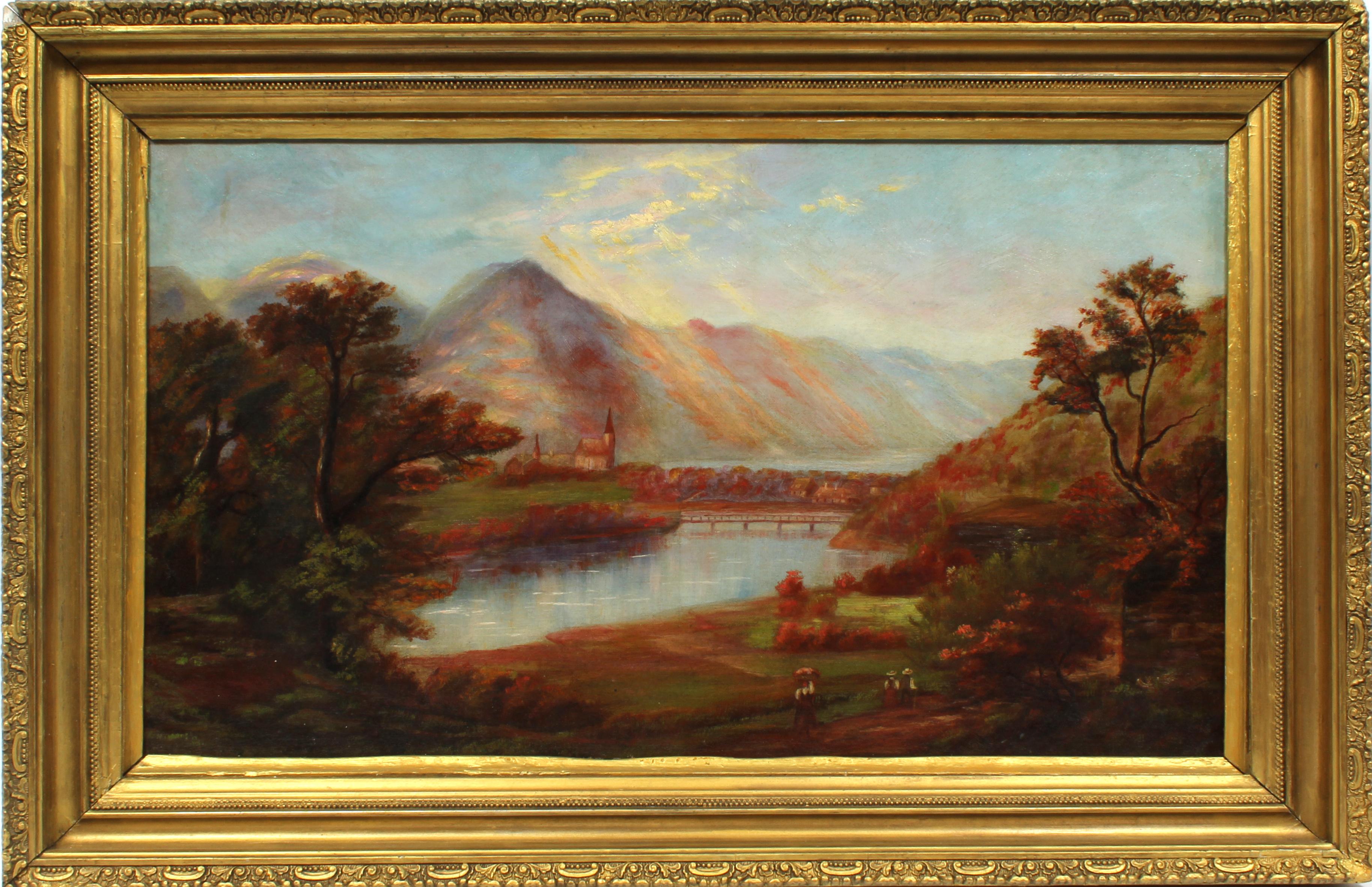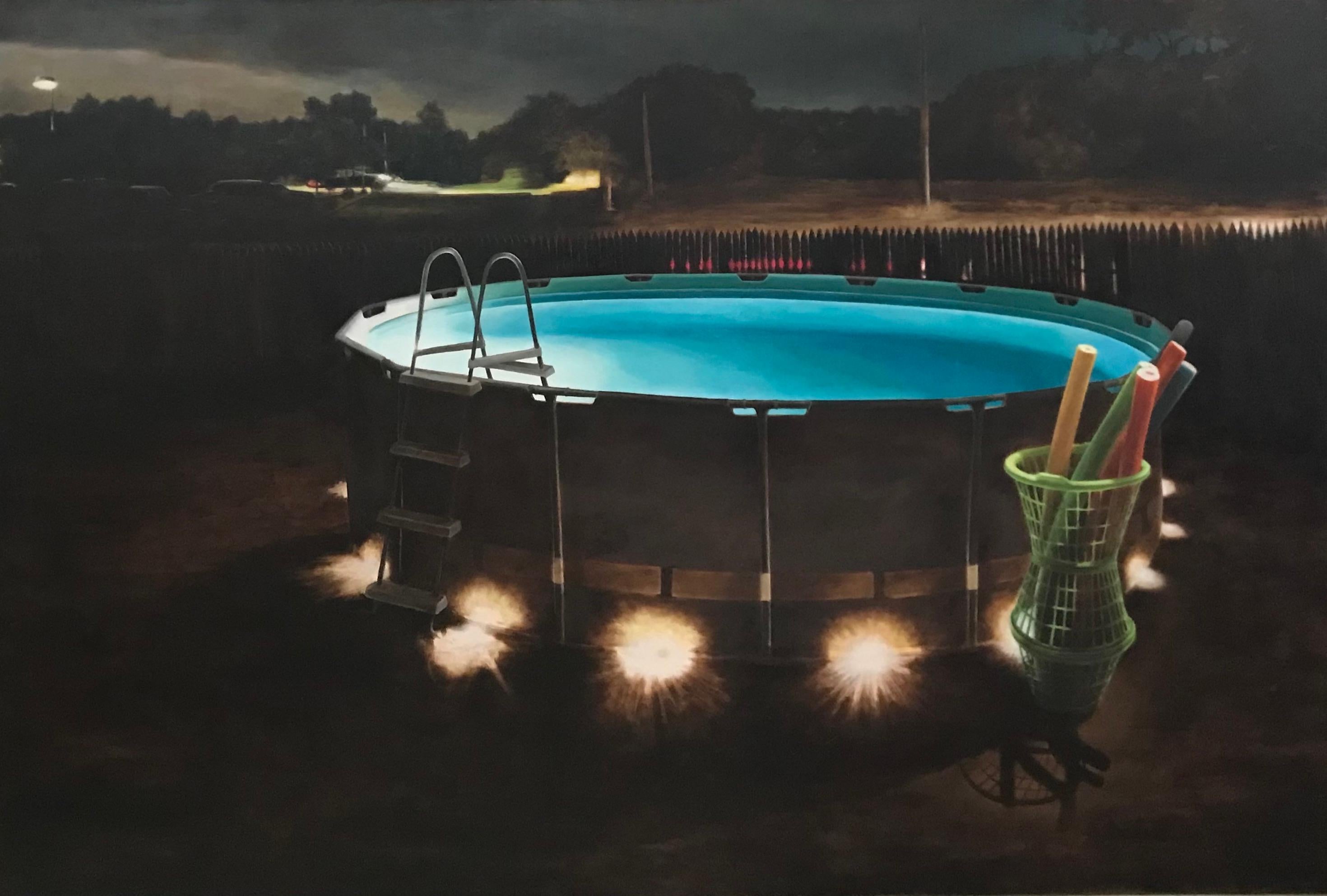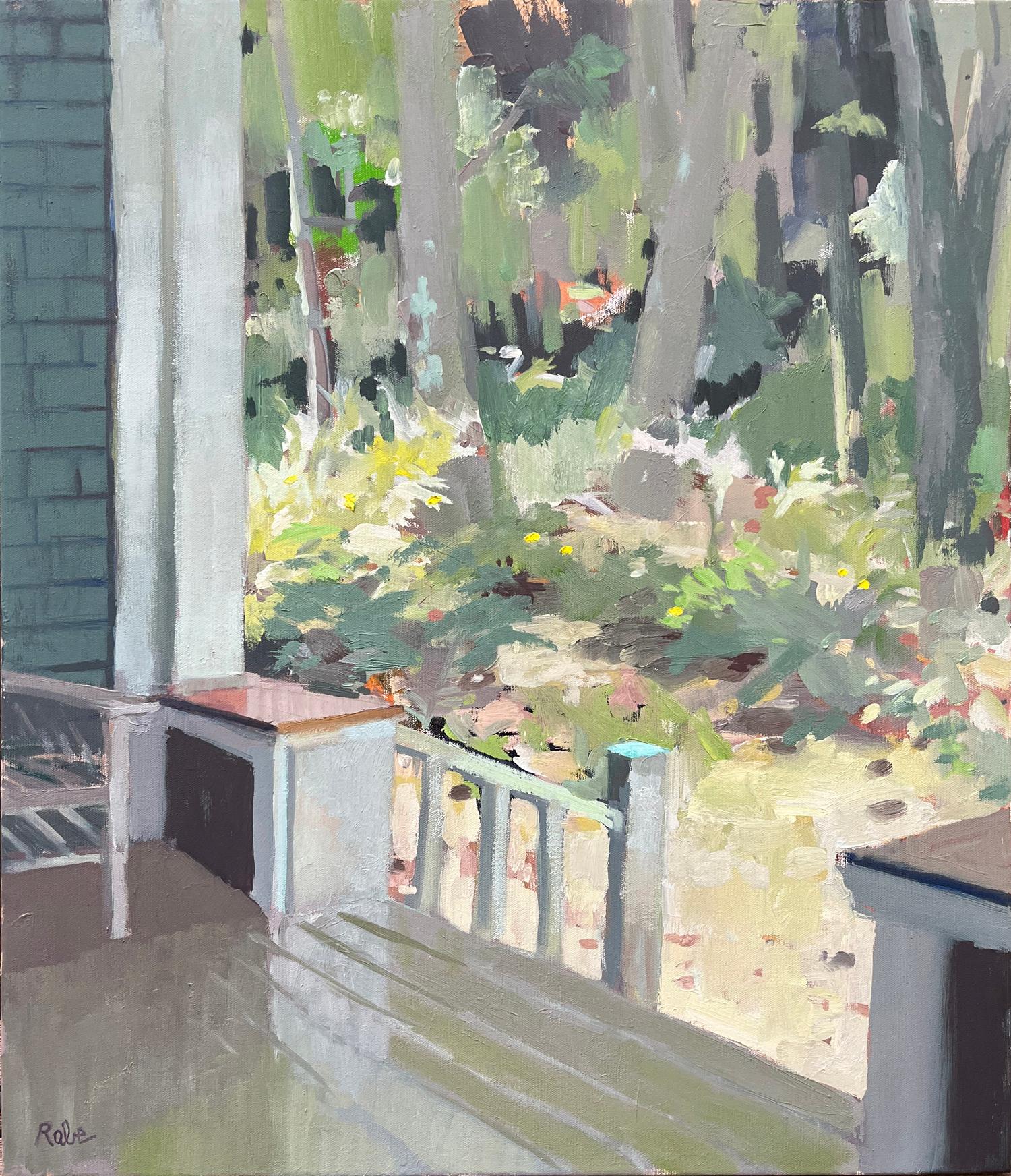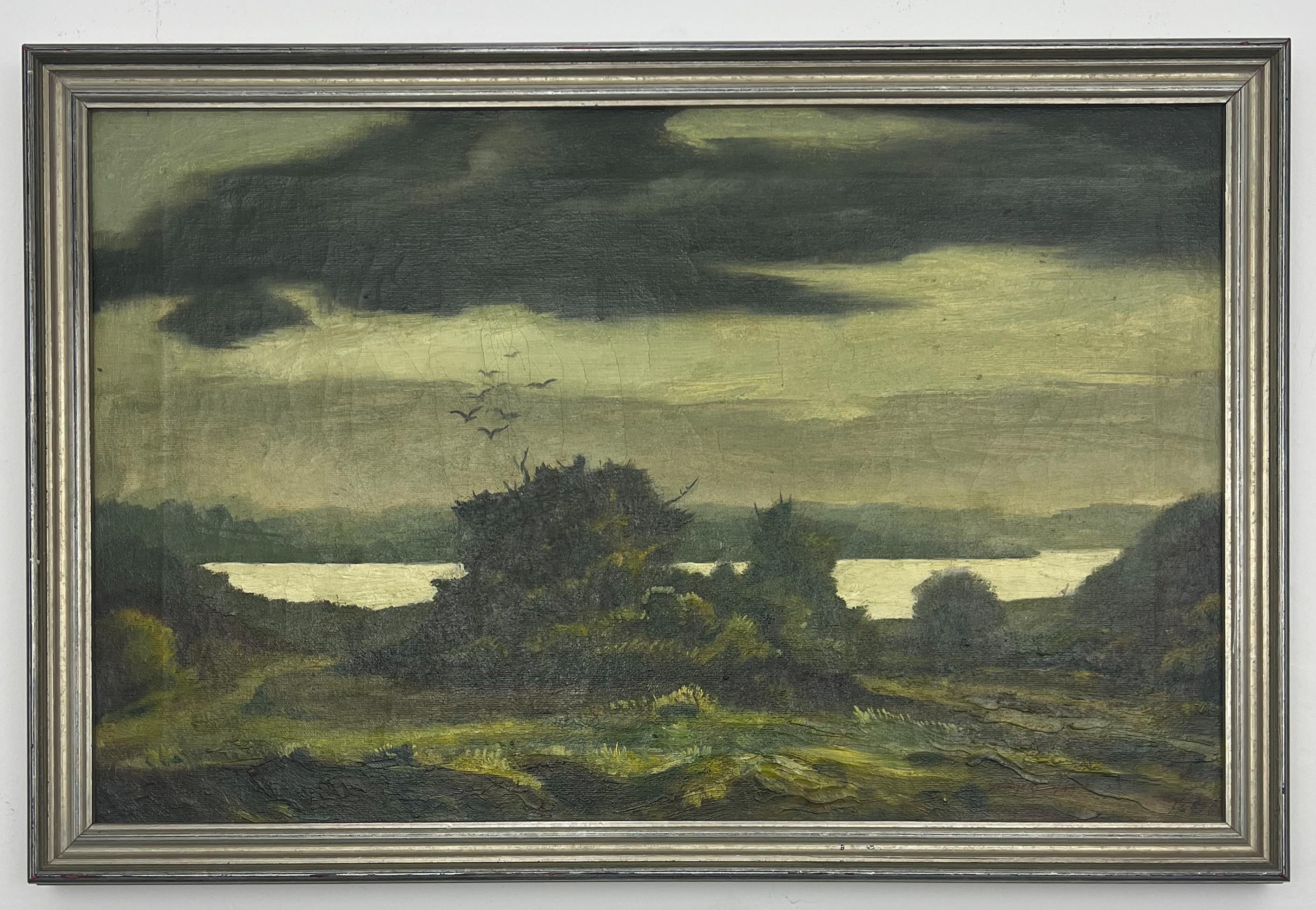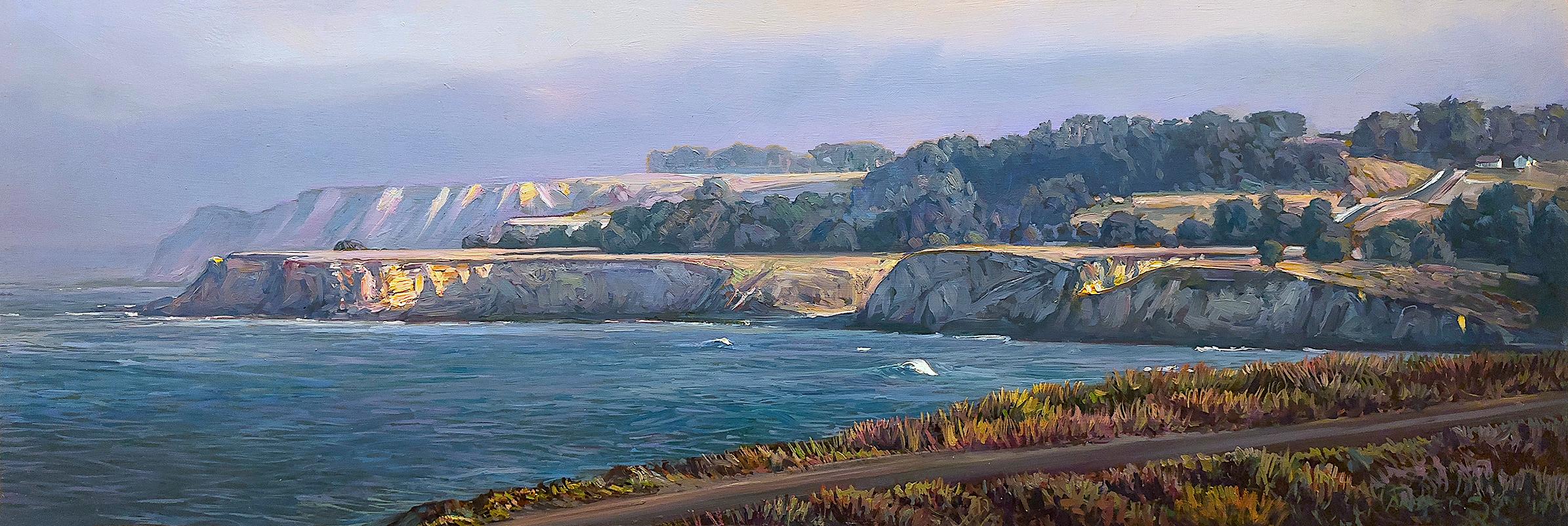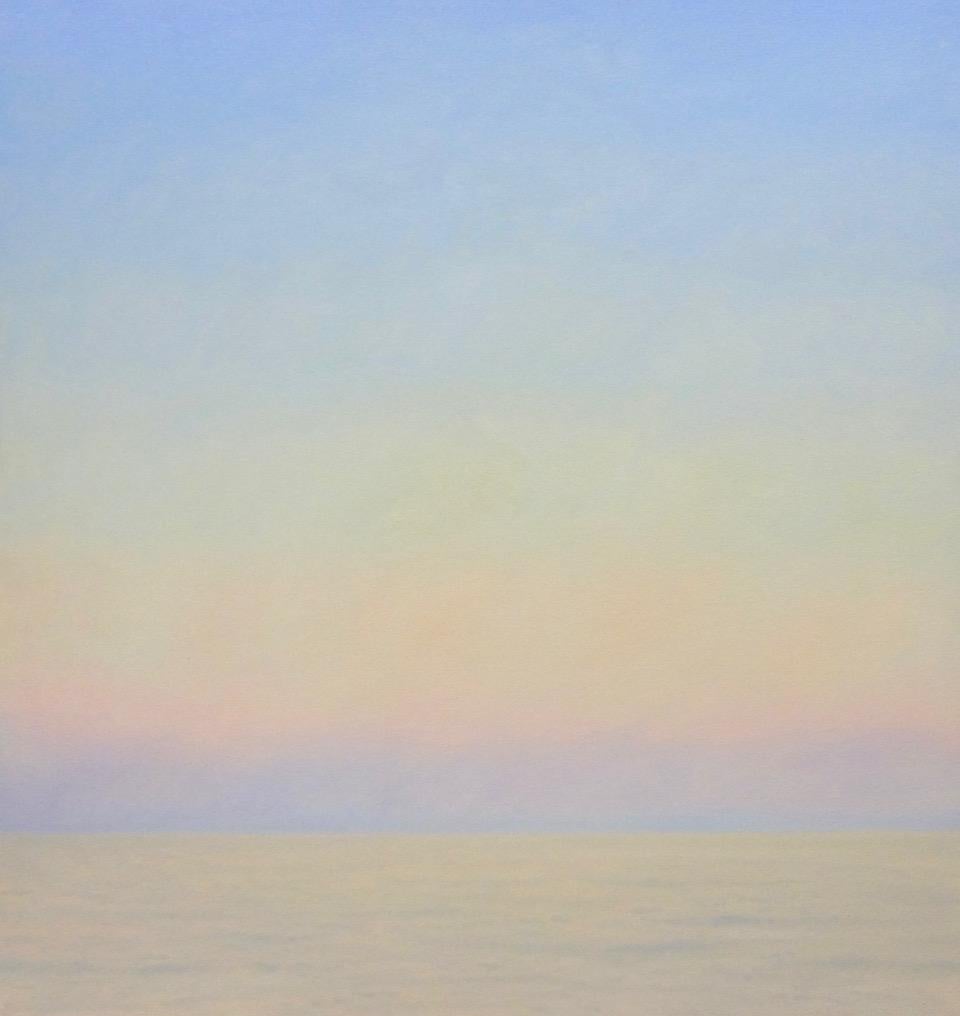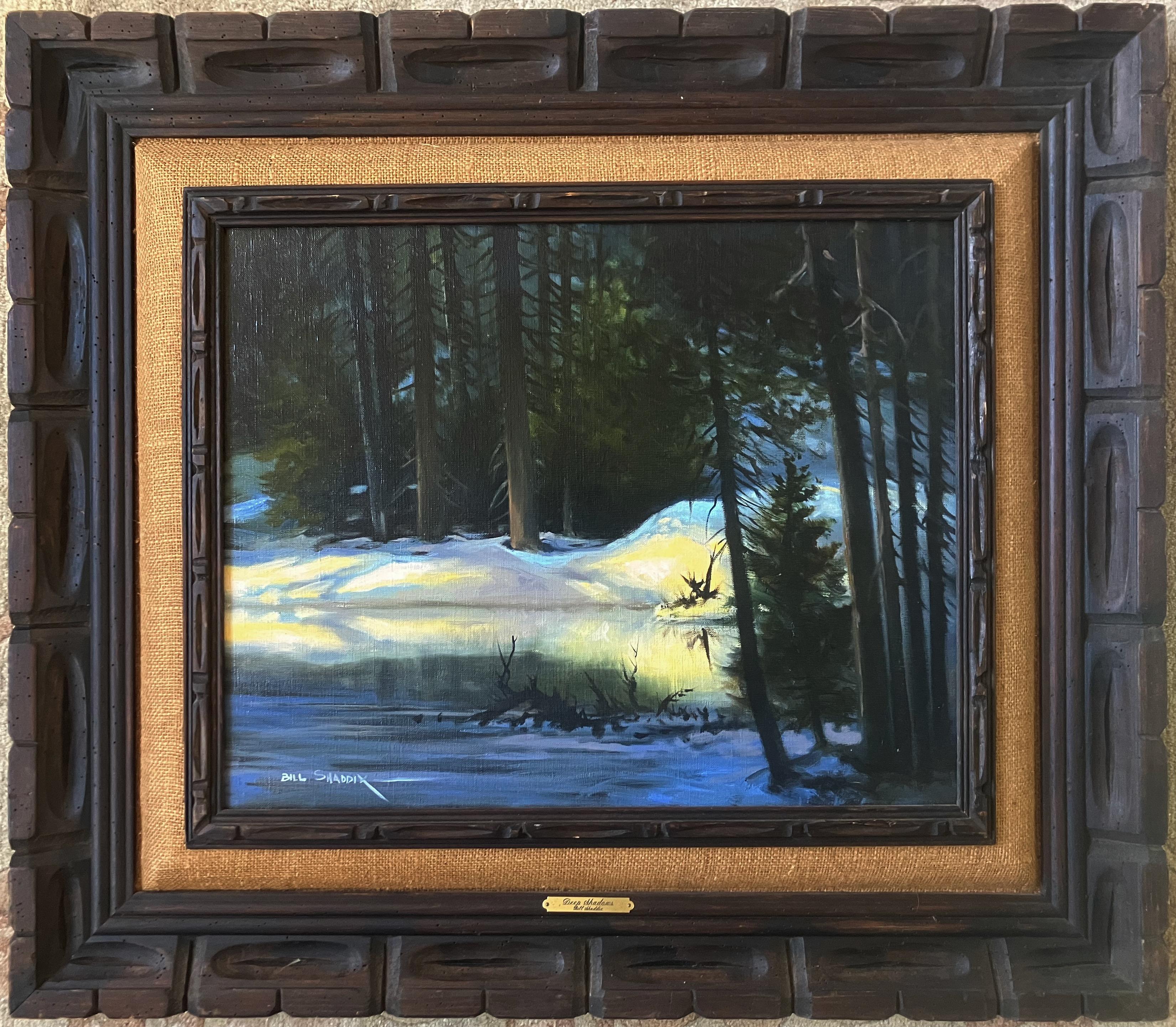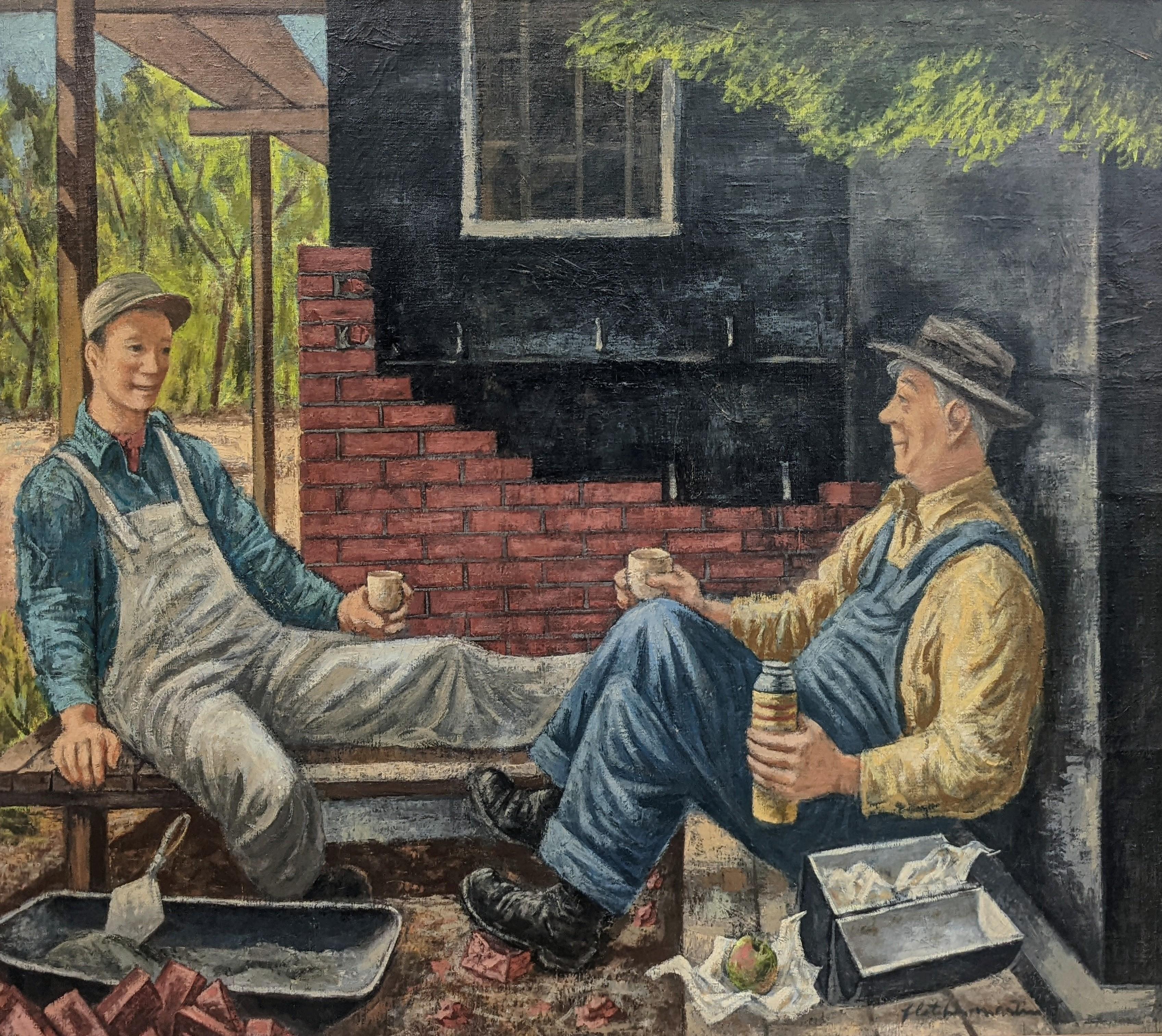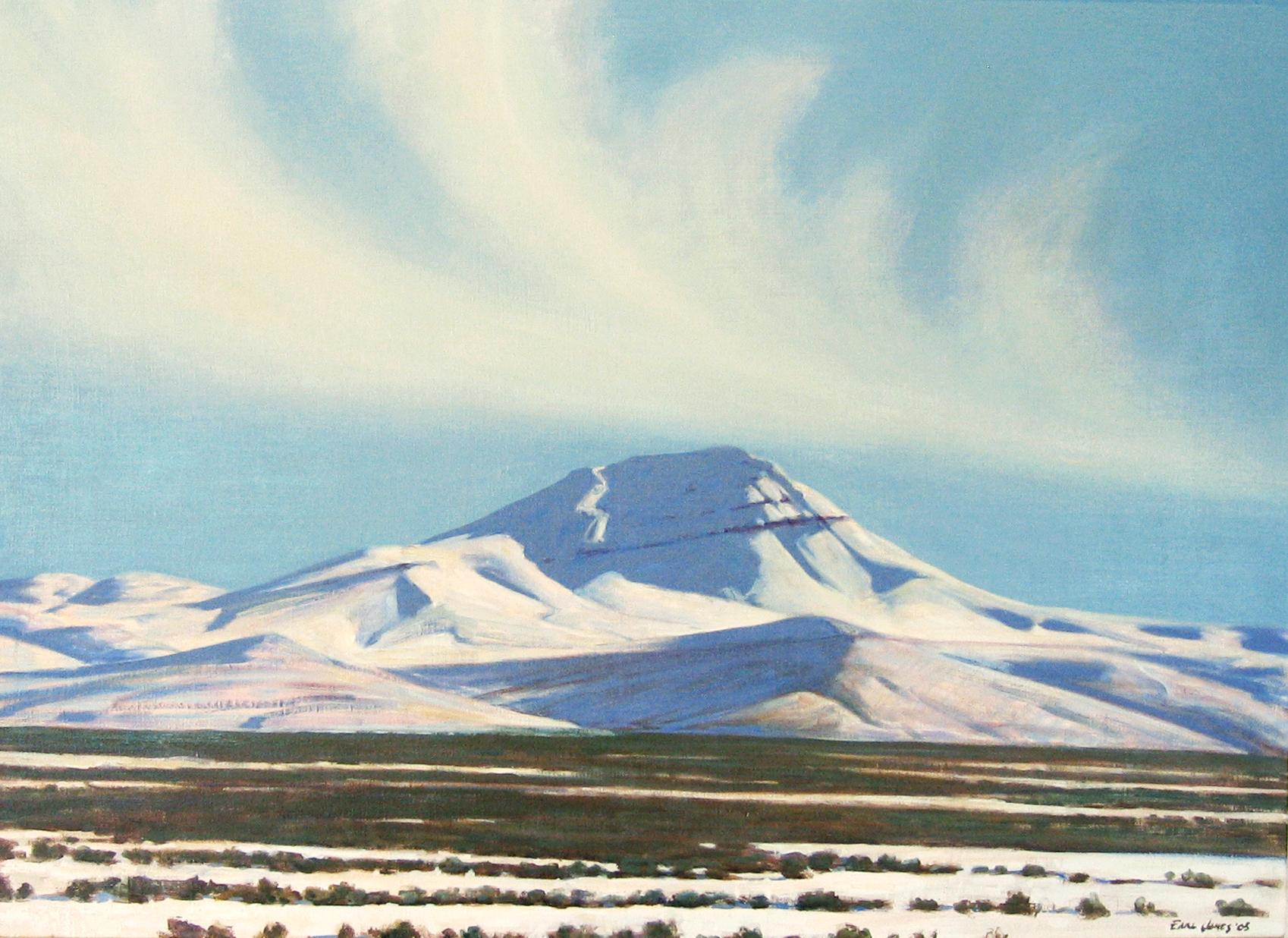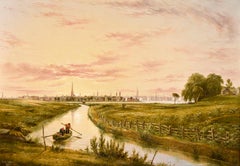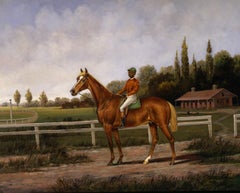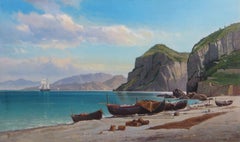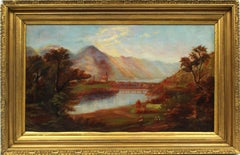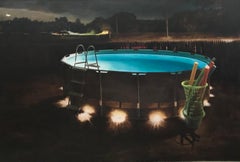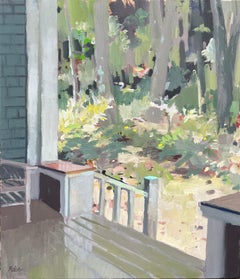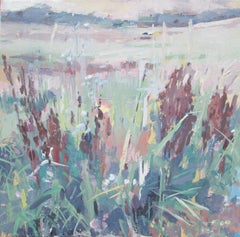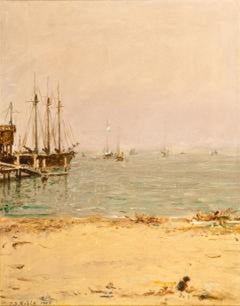
View of Gravesend Bay
View Similar Items
Want more images or videos?
Request additional images or videos from the seller
1 of 7
Thomas Satterwhite NobleView of Gravesend Bay1905
1905
$35,000List Price
About the Item
- Creator:Thomas Satterwhite Noble (1835 - 1907)
- Creation Year:1905
- Dimensions:Height: 18 in (45.72 cm)Width: 14 in (35.56 cm)Depth: 1.5 in (3.81 cm)
- Medium:
- Movement & Style:
- Period:
- Condition:
- Gallery Location:New York, NY
- Reference Number:Seller: APG 83421stDibs: LU236305652
About the Seller
5.0
Recognized Seller
These prestigious sellers are industry leaders and represent the highest echelon for item quality and design.
Established in 1952
1stDibs seller since 2010
35 sales on 1stDibs
Typical response time: 3 hours
Associations
Art Dealers Association of America
Authenticity Guarantee
In the unlikely event there’s an issue with an item’s authenticity, contact us within 1 year for a full refund. DetailsMoney-Back Guarantee
If your item is not as described, is damaged in transit, or does not arrive, contact us within 7 days for a full refund. Details24-Hour Cancellation
You have a 24-hour grace period in which to reconsider your purchase, with no questions asked.Vetted Professional Sellers
Our world-class sellers must adhere to strict standards for service and quality, maintaining the integrity of our listings.Price-Match Guarantee
If you find that a seller listed the same item for a lower price elsewhere, we’ll match it.Trusted Global Delivery
Our best-in-class carrier network provides specialized shipping options worldwide, including custom delivery.More From This Seller
View AllFishing Camp on the Labrador Coast
By William Bradford
Located in New York, NY
In 1852, twenty-nine year old William Bradford was a failing shopkeeper in Fairhaven, Massachusetts. With a wife and child at home, Bradford, by his own admission, “spent too much time in painting to succeed” in business. Rescued from insolvency by his well-to-do in-laws, this is not the beginning of a narrative that generally leads to a happy ending. Not so with Bradford, who ultimately found international fame and fortune as a painter of arctic seascapes and dramatic marine paintings.
William Bradford, the artist, was a lineal descendant of the 17th-century Separatist leader William Bradford, a founder of the Plymouth Plantation, signer of the Mayflower Compact and Governor of the Plymouth Colony. Our Bradford born to a New Bedford ship outfitter in Fairhaven, Massachusetts By the nineteenth century, this line of Bradfords were Quakers, living on the tract purchased nearly two centuries earlier by their pilgrim ancestor. Fairhaven, across the mouth of the Acushnet River from the whaling center of New Bedford was described by a New York journalist in 1857 as “the Brooklyn of New Bedford” (Home Journal, January 3, 1857). Young Bradford displayed an early predilection for the arts, but his Quaker parents were disinclined to support this particular pursuit. After working in his father’s business and then for a dry goods merchant in New Bedford, by 1849 Bradford had set up in New Bedford as a “merchant tailor” offering outfits for “those going to California,” “seamen’s clothing,” custom-tailored “piece goods...
Category
19th Century American Realist Landscape Paintings
Materials
Canvas, Paper, Oil
New York from Hoboken
By William Rickarby Miller
Located in New York, NY
Signed (at lower left): W.R. Miller/ 1851
Category
Mid-19th Century American Realist Landscape Paintings
Materials
Canvas, Oil
Chestnut Racehorse with a Jockey Up On a Training Strap
By Henry H. Cross
Located in New York, NY
It was Henry Cross's portraits of horses belonging to the prominent breeders and trainers of the second half of the nineteenth century that won the artist renown as an animal painter. Born and raised in upstate New York, Cross's proficiency in both drafting and caricature was revealed while he was still a student at the Binghamton Academy, New York. In 1852, when he was only fifteen years old, Cross joined a traveling circus that took him to Minneapolis, Minnesota, and to the first of many Indian encampments that he would draw upon for subject matter throughout his career. Biographers differ as to the year Cross left for Europe, however, he was in Paris from 1852 to 1853 or 1854, where he studied with Rosa Bonheur, a highly esteemed French painter of horses. Upon Cross's return to the United States he was commissioned to paint the studs of wealthy horsemen, including those of Commodore Cornelius Vanderbilt, Robert Bonner, the owner-publisher of The New York Ledger, and "Copper King" Marcus Daly, whose 18,000 acre stock farm was reputed to be the greatest and most valuable horse ranch in the world.
Although Cross received the highest pay of any equine artist of his day (up to $35,000. for one order, according to The Horse Review of April 10, 1918, p. 328), he frequently joined traveling circuses and painted the locales where they visited. He also painted portraits of notable contemporaries, such as President Abraham Lincoln, ex-president Ulysses S. Grant, King Edward VII of England, W. F. "Buffalo Bill...
Category
19th Century American Realist Animal Paintings
Materials
Canvas, Oil
Marina Grande, Capri
By Charles Temple Dix
Located in New York, NY
Charles Temple Dix was born in Albany, New York, the youngest son of the distinguished statesman and soldier, General John Adams Dix. Having already visited Europe as a child, Dix re...
Category
19th Century American Realist Landscape Paintings
Materials
Canvas, Oil
Saint-Malo, Brittany
By William Stanley Haseltine
Located in New York, NY
The career of William Stanley Haseltine spans the entire second half of the nineteenth century. During these years he witnessed the growth and decline of American landscape painting, the new concept of plein-air painting practiced by the Barbizon artists, and the revolutionary techniques of the French Impressionists, all of which had profound effects on the development of painting in the western world. Haseltine remained open to these new developments, selecting aspects of each and assimilating them into his work. What remained constant was his love of nature and his skill at rendering exactly what he saw. His views, at once precise and poetic, are, in effect, portraits of the many places he visited and the landscapes he loved.
Haseltine was born in Philadelphia, the son of a prosperous businessman. In 1850, at the age of fifteen, he began his art studies with Paul Weber, a German artist who had settled in Philadelphia two years earlier. From Weber, Haseltine learned about Romanticism and the meticulous draftsmanship that characterized the German School. At the same time, Haseltine enrolled at the University of Pennsylvania, and took sketching trips around the Pennsylvania countryside, exploring areas along the Delaware and Susquehanna rivers. Following his sophomore year, Haseltine transferred to Harvard University.
After graduating from Harvard in 1854, Haseltine returned to Philadelphia and resumed his studies with Weber. Although Weber encouraged Haseltine to continue his training in Europe, the elder Haseltine was reluctant to encourage his son to pursue a career as an artist. During the next year, Haseltine took various sketching trips along the Hudson River and produced a number of pictures, some of which were exhibited at the Pennsylvania Academy of the Fine Arts in the spring of 1855. Ultimately, having convinced his father that he should be allowed to study in Europe, Haseltine accompanied Weber to Düsseldorf.
The Düsseldorf Academy was, during the 1850s, at the peak of its popularity among American artists. The Academy’s strict course of study emphasized the importance of accurate draftsmanship and a strong sense of professionalism. Landscape painting was the dominant department at the Düsseldorf Academy during this period, and the most famous landscape painter there was Andreas Achenbach, under whom Haseltine studied. Achenbach’s realistic style stressed close observation of form and detail, and reinforced much of what Haseltine had already learned. His Düsseldorf training remained an important influence on him for the rest of his life.
At Düsseldorf, Haseltine became friendly with other American artists studying there, especially Emanuel Leutze, Worthington Whittredge, and Albert Bierstadt. They were constant companions, and in the spring and summer months took sketching trips together. In the summer of 1856 the group took a tour of the Rhine, Ahr, and Nahe valleys, continuing through the Swiss alps and over the Saint Gotthard Pass into northern Italy. The following summer Haseltine, Whittredge, and the painter John Irving returned to Switzerland and Italy, and this time continued on to Rome.
Rome was a fertile ground for artists at mid-century. When Haseltine arrived in the fall of 1857, the American sculptors Harriet Hosmer, Chauncey B. Ives, Joseph Mozier, William Henry Rinehart...
Category
19th Century American Realist Landscape Paintings
Materials
Canvas, Oil
Mt. Etna from Taormina
By Thomas Fransioli
Located in New York, NY
Thomas Fransioli, born in 1906 in Seattle, Washington, trained as an architect at the University of Pennsylvania. He worked as an architect before his service in World War II. Largel...
Category
20th Century American Realist Landscape Paintings
Materials
Canvas, Oil
You May Also Like
Antique American Autumn Mountain Lake with Village Oil Painting
Located in Buffalo, NY
Antique American autumn mountain lake with village oil painting. Framed. Oil on canvas.
Category
Late 19th Century American Realist Landscape Paintings
Materials
Canvas, Oil
$1,191 Sale Price
20% Off
"Night Swimming" Contemporary Oil Painting -photorealism with emotional intimacy
Located in New York, NY
oil on canvas, 40"x60" signed on reverse by the artist, Linda Griggs. This striking fine art painting captures the quiet allure of a nighttime swimming pool, glowing against the dark...
Category
2010s American Realist Still-life Paintings
Materials
Canvas, Oil
Summer on the Porch
Located in Lexington, MA
Summer on the Porch is a luminous 28 x 24 inch oil painting by acclaimed contemporary realist Carole Rabe, celebrated for her ability to elevate everyday moments into poetic visual n...
Category
2010s American Realist Still-life Paintings
Materials
Canvas, Oil
Meadow in Drought
Located in Lexington, MA
In Meadow in Drought, Carole Rabe captures the fragile beauty of a New England field under summer stress. This 20 x 20 inch oil on canvas balances abstraction and naturalism with exp...
Category
2010s American Realist Landscape Paintings
Materials
Canvas, Oil
Street of the Old Quarter British School signed Cade oil on canvas painting
Located in Barcelona, Barcelona
**Technical Sheet**
**Title:** "Street of the Old Quarter"
**Author:** British School, 19th Century
**Date:** 1892
**Technique:** Oil on canvas
**Dimensions:** 14.17 x 10.63 inc...
Category
1890s American Realist Figurative Paintings
Materials
Canvas, Oil
$837 Sale Price
41% Off
Realist Landscape Original Oil Painting- Small Green Tonal Midwestern Scene
Located in Marco Island, FL
This is a great American landscape painting by the artist, Clyde Singer. Gorgeous tonal shades of green and grey depict a stormy midwestern landscape.
Framed 16 x 24 inches
Canva...
Category
1940s American Realist Landscape Paintings
Materials
Canvas, Oil
